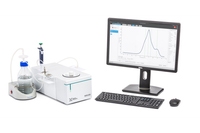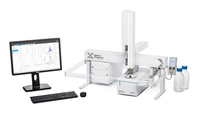Protein higher order structure (HOS) include the three-dimensional structures that are necessary for structure and function. Register now to access further resources for your success.
During the development of proteins for use as biologics, the primary structure (amino acid sequence) is important in defining protein activity. Due to the complex nature of protein drugs, it is important to characterize the protein’s higher-order structure (HOS) to understand its stability, folding, structure, and functional activity.
Protein structure can be characterized into different levels:
Secondary, tertiary and quaternary structure is often collectively termed as the higher order structure (HOS) of a protein. HOS is responsible for the correct folding and three-dimensional shape of a biologic drug. This can be affected by different formulations, which in turn can affect protein activity. The folding and shape of the protein impacts directly on the functionality of the protein drug.
Incorrect higher order structure can also raise safety issues - if the overall folding and therefore 3D shape of a protein is incorrect, immunogenic epitopes can be exposed and protein aggregation can occur. HOS characterization is a critical component of biologics development and should be performed alongside functional analysis and primary structure characterization to allow a full understanding of the overall protein structure.
HOS is characterized by a variety of our biophysical solutions including:
With complimentary and orthogonal techniques, HOS data can be used to make decisions as to which drugs to move forward within development, how to formulate the drugs, and/or as quality control and biocomparability studies.
Several instruments in our characterization toolbox are used in HOS characterization of biologics, including MicroCal PEAQ DSC and PEAQ-DSC Automated systems, and the Zetasizer series of light scattering instruments.

PEAQ-DSCGold standard protein stability analysis for research applications |

PEAQ-DSC AutomatedGold standard protein stability analysis for the regulated environment |

Zetasizer Advance RangeLight Scattering for every application |
|
|---|---|---|---|
| Technology | |||
| Differential Scanning Calorimetry (DSC) | |||
| Dynamic Light Scattering | |||
| Electrophoretic Light Scattering | |||
| Non-Invasive Back-Scatter (NIBS) | |||
| Multi-Angle Dynamic Light Scattering (MADLS) | |||